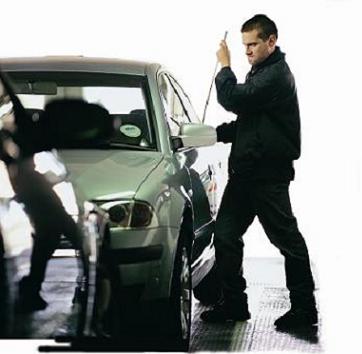By USDR

Name changes and mission expansion over the years evolved into today’s NICB—with over 1,100 member insurance companies. Although recovering stolen vehicles remains a central function at NICB, our special agents, investigative assistants, intelligence analysts, trainers, government and public affairs personnel are equally focused on other pervasive fraud schemes, particularly within the medical and commercial environments.
Watch a special edition video. Download a timeline infographic to learn more about NICB and how Hot Spots has evolved over the years. See an additional graphic here.
NICB’s Hot Spots report examines vehicle theft data obtained from the National Crime Information Center (NCIC) for each of the nation’s metropolitan statistical areas (MSAs). MSAs are designated by the Office of Management and Budget (OMB) and often include areas much larger than the cities for which they are named. For example, the Bakersfield, Calif., MSA includes all thefts within the entire county of Kern, not just the city of Bakersfield.
Moreover, as a population-based survey, an area with a much smaller population and a moderate number of thefts can–and often does–have a higher theft rate than an area with a much more significant vehicle theft problem and a larger population to absorb it.
For 2013, the 10 MSAs with the highest vehicle theft rates were:
| 2013 Ranking | 2012 Ranking | |
| 1. | Bakersfield, Calif. | 3 |
| 2. | Fresno, Calif. | 2 |
| 3. | Modesto, Calif. | 1 |
| 4. | San Francisco/Oakland/Hayward, Calif. | 6 |
| 5. | Stockton-Lodi, Calif. | 4 |
| 6. | Redding, Calif. | 10 |
| 7. | Spokane-Spokane Valley, Wash. | 9 |
| 8. | Vallejo-Fairfield, Calif. | 8 |
| 9. | San Jose/Sunnyvale/Santa Clara, Calif. | 7 |
| 10. | Yuba City, Calif. | 31 |
Although California tends to place high in this report, this is the first time that California has held nine of the top 10 spots for MSAs with the highest per capita vehicle theft rates. In 2012, it held eight and in 2011, seven.
But there is good news nonetheless.
In 2012, a small increase in vehicle thefts ended a consecutive eight–year run of decreasing thefts. However, the 2013 NICB data shows thefts are once again on the decline. This is in line with preliminary 2013 FBI vehicle theft data– –released in February– –that shows a 3.2 percent decrease in vehicle thefts for the first half of 2013. If the preliminary FBI data holds when the final 2013 vehicle theft figures are released, then there is a good chance that the national total will be close to what it was back in 1967.
The full Hot Spots report is available at www.nicb.org.
Although national vehicle thefts continue to decline, NICB still recommends that drivers follow our four “layers of protection” to guard against vehicle theft:
Common Sense — The common sense approach to protection is the easiest and most cost–effective way to thwart would-be thieves. You should always:
- Remove your keys from the ignition
- Lock your doors /close your windows
- Park in a well–lit area
Warning Device — The second layer of protection is a visible or audible device which alerts thieves that your vehicle is protected. Popular devices include:
- Audible alarms
- Steering column collars
- Steering wheel/brake pedal lock
- Brake locks
- Wheel locksM
- Theft deterrent decals
- Identification markers in or on vehicle
- VIN etching
- Micro dot marking
Immobilizing Device – The third layer of protection is a device which prevents thieves from bypassing your ignition and hot-wiring the vehicle. Some electronic devices have computer chips in ignition keys. Other devices inhibit the flow of electricity or fuel to the engine until a hidden switch or button is activated. Some examples are:
- Smart keys
- Fuse cut-offs
- Kill switches
- Starter, ignition, and fuel pump disablers
- Wireless ignition authentication
Tracking Device — The final layer of protection is a tracking device which emits a signal to police or a monitoring station when the vehicle is stolen. Tracking devices are very effective in helping authorities recover stolen vehicles. Some systems employ “telematics” which combine GPS and wireless technologies to allow remote monitoring of a vehicle. If the vehicle is moved, the system will alert the owner and the vehicle can be tracked via computer.
Anyone with information concerning insurance fraud or vehicle theft can report it anonymously by calling toll-free 800-TEL-NICB (800-835-6422), texting keyword “fraud” to TIP411 (847411) or submitting a form on our website. Or, download the NICB Fraud Tips app on your iPhone or Android device.
About the National Insurance Crime Bureau: headquartered in Des Plaines, Ill., the NICB is the nation’s leading not–for–profit organization exclusively dedicated to preventing, detecting and defeating insurance fraud and vehicle theft through data analytics, investigations, training, legislative advocacy and public awareness. The NICB is supported by more than 1,100 property and casualty insurance companies and self–insured organizations. NICB member companies wrote $371 billion in insurance premiums in 2013, or more than 78 percent of the nation’s property/casualty insurance. That includes more than 93 percent ($168 billion) of the nation’s personal auto insurance. To learn more visit www.nicb.org.


Average Rating